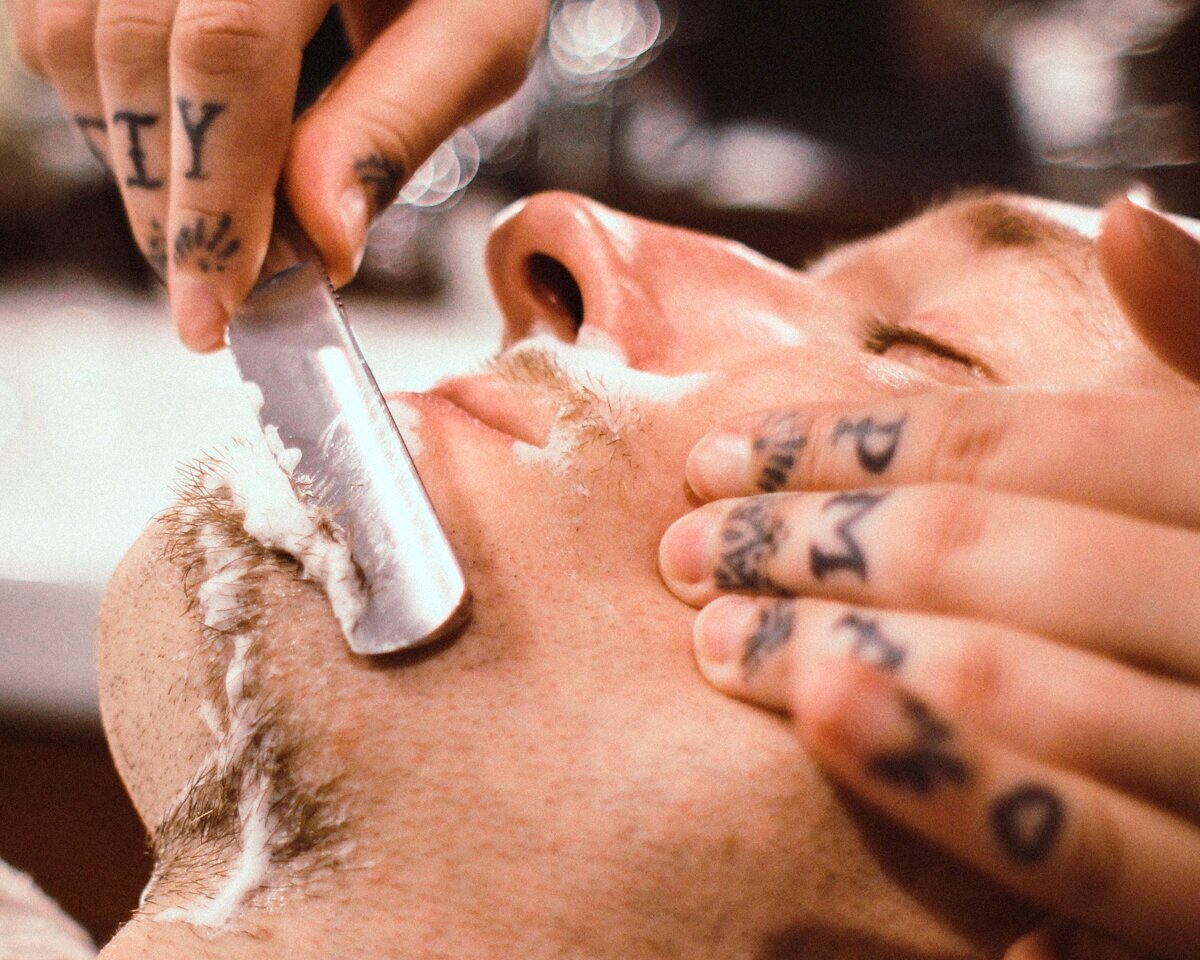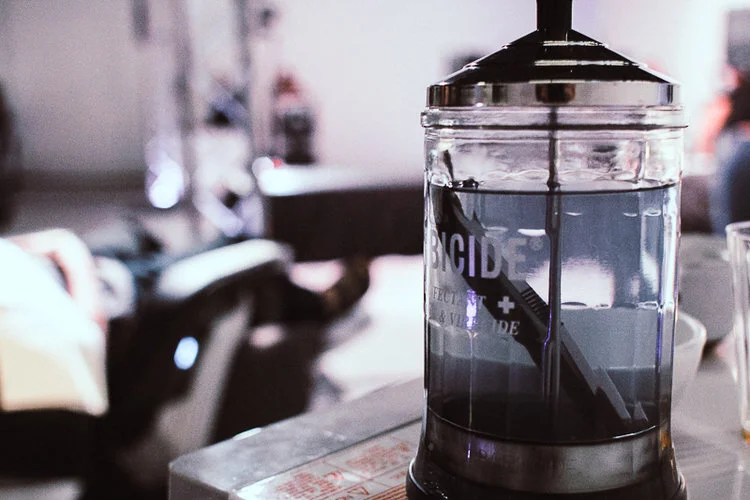You may have heard that conventional straight razor use is illegal in professional barbershops and salons. You might think they are somehow unsafe for you or your client. Even in school, an instructor might have told you, “only single-use blades are legal” . This is a MYTH perpetuated by decades of misinformation, and we’d like to set the record straight. Right here, right now.
STATE BOARD HAS THE ANSWER
Each state’s health authority lays out specific requirements for clean and safe practices in barbershops. We have checked rules & regs in many states including OR, CA, WA, CO, UT, PA, FL, TN, NY, NJ… In fact, the only state we have confirmed explicitly prohibits use of conventional straight razors is Rhode Island!
Now, obviously we’re not lawyers, but we are advocates for a better world with a more sustainable culture. As such, give your local health authority a call! We have phoned several different states and most often the response to, "Are reusable straight razors illegal to use in the shop?" is, "Who told you that? Of course it's fine to use those..."
Nevertheless, you may carry this myth with you as a barber or stylist. I think we create barriers like this because we’re afraid of what the answer will be. The answer might restrict us further or reveal an answer which we weren't prepared to digest. We’re taught that striking out on our own is to pursue a freedom we couldn't find in a "regular" job, so we avoid rules and authority so that we don't have to be on the hook for knowing the answer. I completely understand this and could dedicate a full series of posts to that fear and doubt. Maybe I’ll get around to those posts at some point, but in the meantime, call the board! They have the answers and there’s no risk in asking them questions!
CALIFORNIA’S RULES
The California Board of Barbering & Cosmetology names razors specifically in its definitions of non-electrical tools and implements.
977. Definitions.
“Non-Electrical Tools — All tools used for barbering, cosmetology and electrology that do not use any form of electricity to operate. These include, but are not limited to shears, razors, cuticle nippers, cuticle pushers, nail clippers, metal files, metal smoothers, combs and hair clips.”
California does not distinguish between grades of disinfectant, so the use of Barbicide Plus is not required.
“Disinfectant — A product registered by the U.S. Environmental Protection Agency (EPA) that has demonstrated bactericidal, fungicidal and virucidal activity. The products used must include a label from the manufacturer that indicates the EPA registration and must be in liquid form to disinfect non-electrical tools and spray or wipe form to disinfect electrical tools and shears.”
Finally, they give instructions for proper disinfection.
“979. Disinfecting Non-Electrical Instruments and Equipment
(a) Before use upon a client, all non-electrical tools that can be disinfected, excluding shears, shall be disinfected in the following sequential manner:
(1) Remove all visible debris.
(2) Clean with soap or detergent and water.
(3) Completely dry tools with a new, clean paper towel.
(4) Then totally immerse in an EPA-registered disinfectant with demonstrated bactericidal, fungicidal, and virucidal activity, used according to manufacturer's instructions.
(5) Licensees or students shall wear protective gloves or use tongs when removing tools from the disinfectant.
(b) The disinfectant solutions specified in subdivision (a) shall:
(1) Remain covered at all times.
(2) Be changed according to the manufacturer’s instructions or when it is cloudy or contains debris.
(c) All tools used on a client or soiled in any manner shall be placed in a container labeled “Dirty”, “Soiled”, or “Contaminated”.
(d) All disinfected tools shall be stored in a clean, covered place which is labeled “Clean” or “Disinfected”.
(e) Disinfected tools shall not be placed in a container, pouch or holder which cannot be disinfected.”
In short, conventional straight razors are perfectly safe for you to use as long as they are properly sanitized between each client.
Portland Razor Co. Cascade Steel Straight Razor in High-Level Barbicide.
OUR SANITIZATION PROCESS
We developed the following process to meet these requirements and guarantee that our razors are sharp and safe for each client. Every step should be performed before each use:
Carefully rinse and dry the entire straight razor with a clean towel.
Strop the razor.
Immerse the razor and scales (closed) in an approved high-level disinfectant such as Barbicide Plus for manufacturer’s recommended duration.
Rinse and dry the razor with a clean towel, and place in a sealed, clean container for storage prior to use.
Upon completion of the shave, repeat steps 1-4 to prepare for the next client.
Because a strop is porous and cannot be sanitized, NEVER strop the razor without then completing the entire sanitation process. The same is true if the razor comes in contact with any other unsanitary surface.
NEVER use the razor on multiple clients. For the safety of your clients, sanitize the razor before using it on your next client.
WHERE DID THIS MYTH COME FROM?
This brings us to an important point which may explain why conventional straight razors fell out of fashion in the first place. As our understanding of blood-borne diseases and sanitary practices expanded, health authorities updated code to keep clients and practitioners safe in the 1980s and 1990s. Unfortunately, straight razor manufacturers had been on the decline since the early 1900s with the introduction of disposable razors to the market and never updated the straight razor's materials to withstand the disinfectants required by the new rules:
Vintage Blades made of high carbon steel do not hold an edge in high-level disinfectant.
Vintage Scales made of organic materials such as bone or horn or low-quality plastics also do not fare well in the high-level.
In this way, conventional razors were made impractical through legislation while still leaving the door open if improvements were made to the materials. When developing our Professional Line, we approached these rules and regulations to guide our material choices and were able to hatch a straight razor that was classic, non-disposable, and fully sanitizable!
If you have any doubts about the legality of using a conventional straight razor in your shop, we urge you to take a quick look through your local health authority's documentation. It is all available online and should clear things up!



